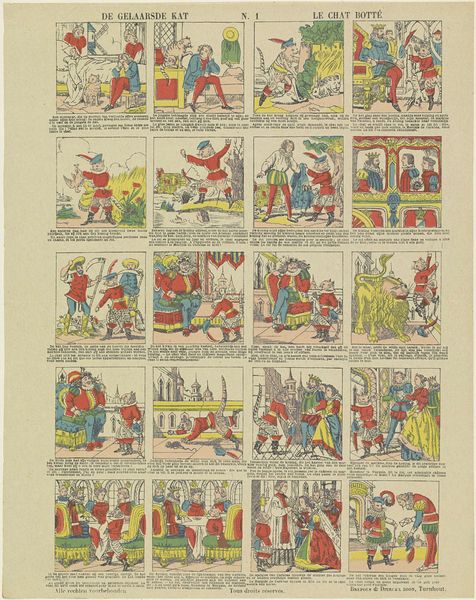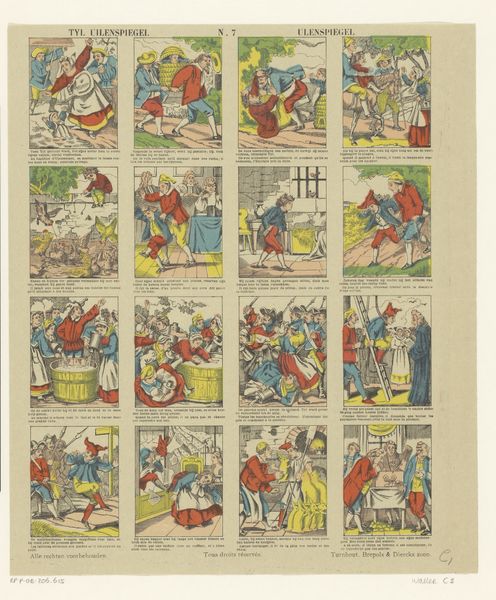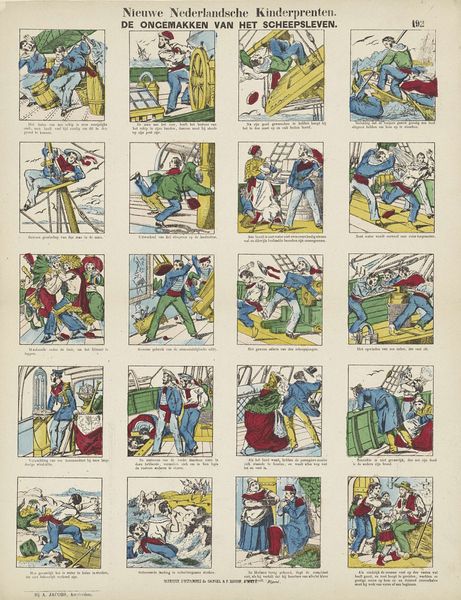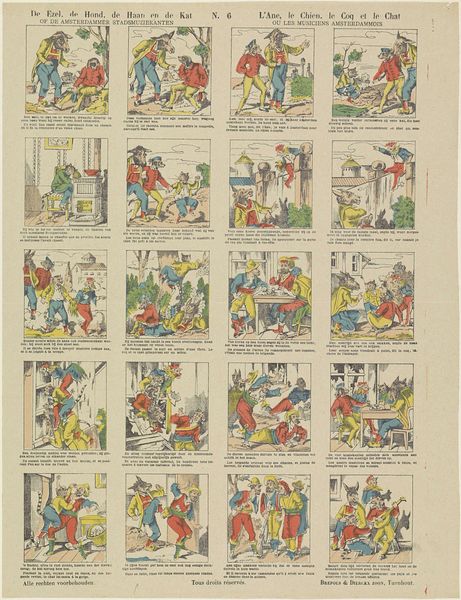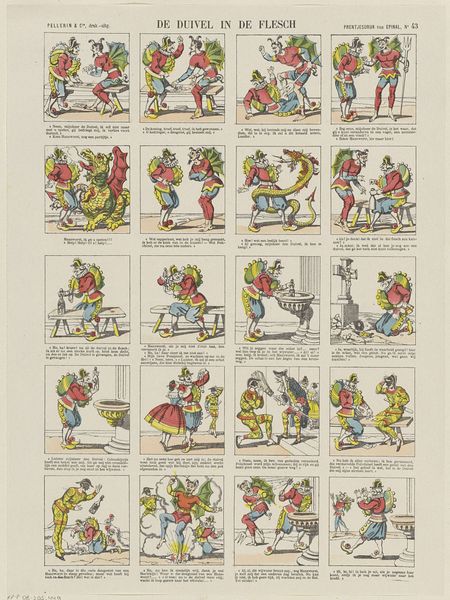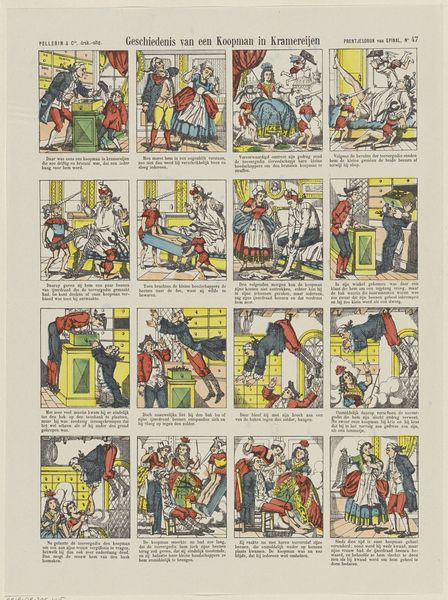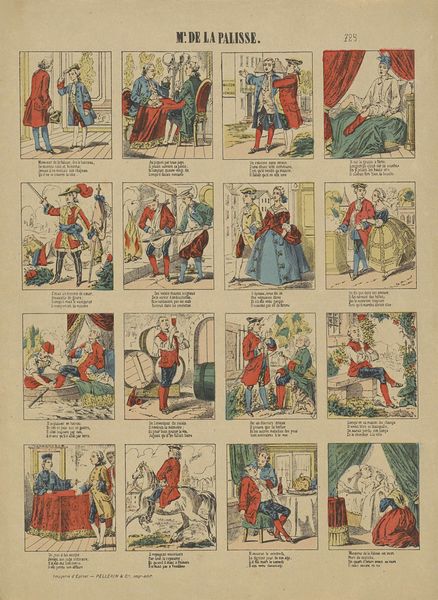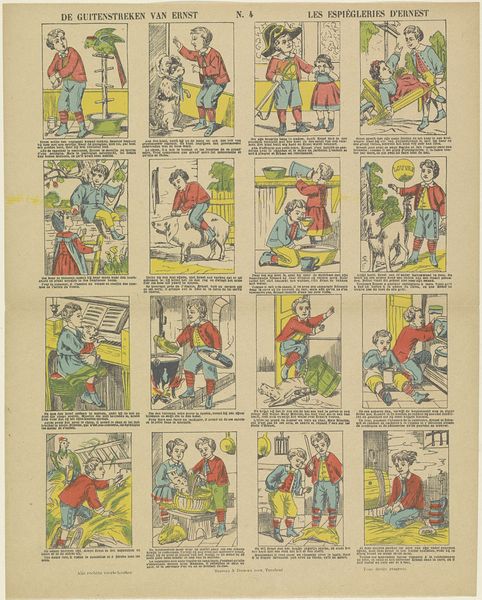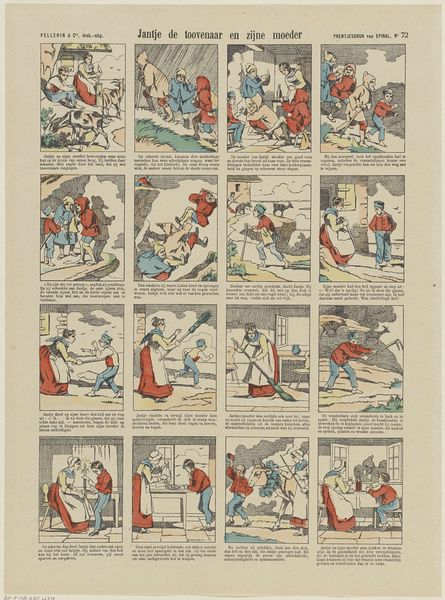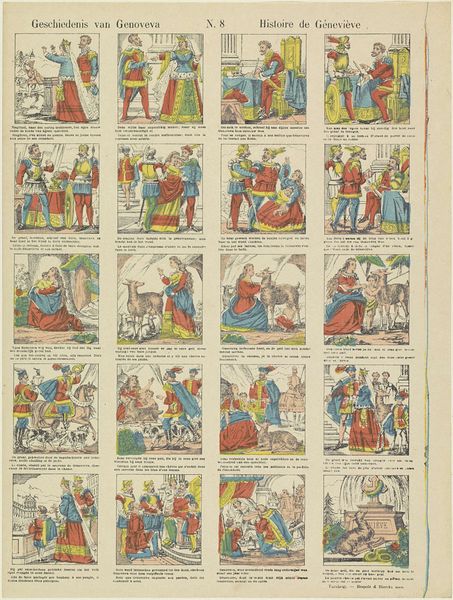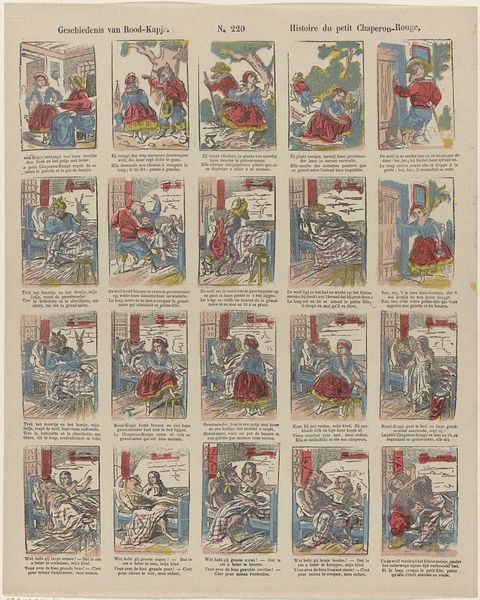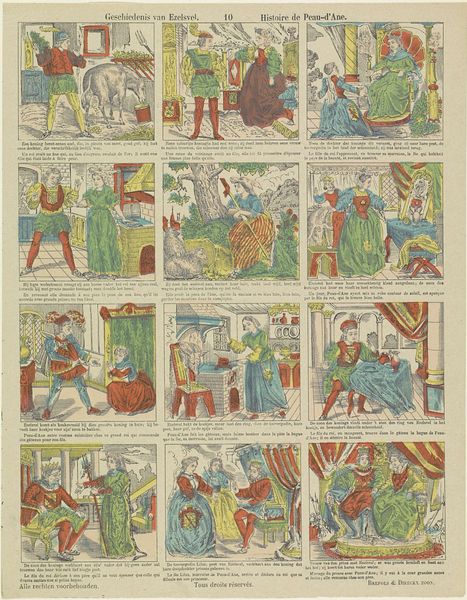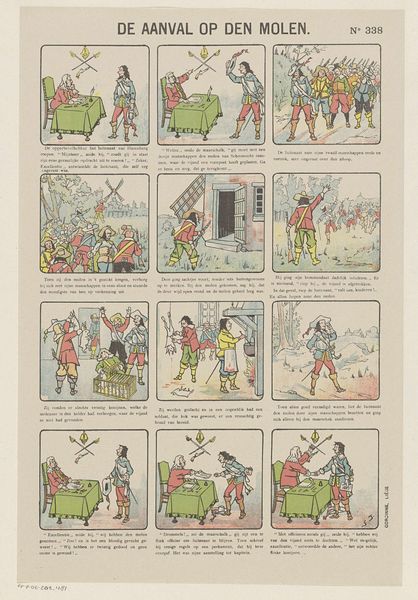
#
comic strip sketch
#
comic strip
#
personal sketchbook
#
pen work
#
sketchbook drawing
#
storyboard and sketchbook work
#
sketchbook art
#
cartoon theme
#
coloring book page
#
doodle art
Dimensions: height 385 mm, width 301 mm
Copyright: Rijks Museum: Open Domain
Editor: This is “De Gelaarsde Kat / Le chat botté,” or "Puss in Boots," made sometime between 1833 and 1911 by Brepols & Dierckx. It seems like a page from a children’s book, a series of little panels illustrating a story. What strikes me is how mass-producible it looks, almost like an early comic strip. What can you tell me about it? Curator: Precisely. Note the use of relatively simple lines and blocks of color, efficiently rendered to tell a story. How do you think these images were printed? Was it meant for individual ownership or distribution to a wider, perhaps less affluent, audience? Editor: Maybe woodblock printing or an early form of lithography? I hadn't considered its potential reach… It wouldn't be like a single, handcrafted art piece. Curator: Exactly. Consider the role of Brepols & Dierckx, a printing firm, in the creation of "art." Their business was not necessarily artistic expression, but rather dissemination of stories through visual means, likely targeting children and families. This speaks volumes about their manufacturing and societal position at the time. Could this shift our understanding of artistic labor? Editor: That's fascinating. It challenges my preconceived notion of art as something unique and precious. This feels more utilitarian, focused on accessibility and consumption. Curator: Think about the labor involved—from the original design to the printing process and the intended readership. Did the people that made this see themselves as artists in the same way that, say, Van Gogh did? How does understanding its means of production shift our evaluation of its artistic merit? Editor: So, it's less about individual genius and more about collaborative production and catering to a market. I see it as a valuable document now, speaking to the social and economic realities of its time. Curator: Precisely! It highlights the often overlooked labor and systems that underpin art, making us question what constitutes art and how it circulates within society. It is interesting to see it this way, right?
Comments
No comments
Be the first to comment and join the conversation on the ultimate creative platform.
